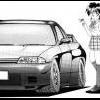Whiteline Sway Bars
Announcements
-
Similar Content
-
Latest Posts
-
I've managed to find this: Nissan_Stagea_AutechVersion260RS (1).pdf
-
I believe @Duncan has given it a crack at Mt Buller before (in actual race conditions)
-
By soviet_merlin · Posted
All my Polish car culture insight comes from watching Nightride. So I half expect this to get 1UZ swapped eventually?! Are you going to drive it in winter? I'm always curious how ATTESA would hold up in the snow. There isn't that much opportunity to try it in Australia. -
My steering lock unit on my Infiniti G37 has failed. The car is a local 2012 Infiniti G37 (Q60 ) I need to replace the unit My local mechanic said i need to buy a complete steering wheel assembly. Does anybody no any mechanics in Gold Coast or Brisbane who can fix this issue or where i can buy just the Steering lock control unit. Thanks
-
By thatjawncrazy · Posted
thanks, will conduct myself accordingly. i unfortunately put about 150 miles on the car before reading this thread again, however no PS issues, and definitely no turbo issues. it spools normally and still feels fast to me, probably because my previous car was an N/A auto sedan...gonna go fix the PS vacuum line though lol. safe to say, got what i came to this thread for. thanks
-







Recommended Posts
Create an account or sign in to comment
You need to be a member in order to leave a comment
Create an account
Sign up for a new account in our community. It's easy!
Register a new accountSign in
Already have an account? Sign in here.
Sign In Now